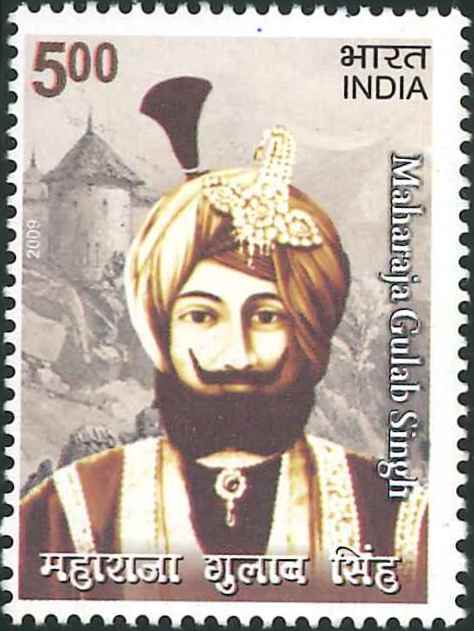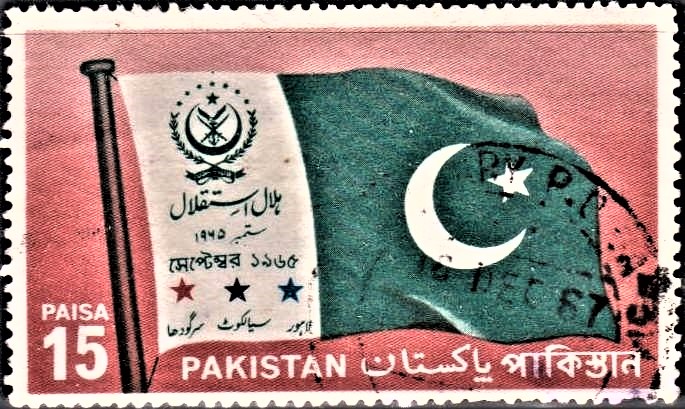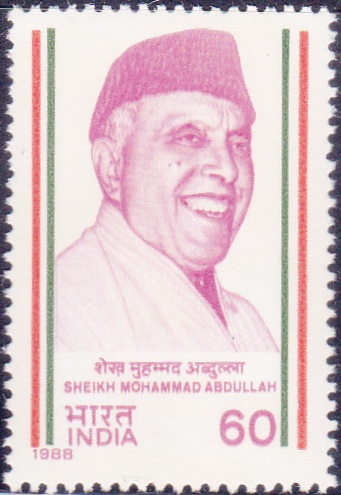
Brigadier Rajinder Singh, MVC
A commemorative postage stamp on Rajendra Singh (Brigadier), the Saviour of Kashmir :

 Issued by India
Issued by India
Issued on Oct 27, 1999
Issued for : The Department of Posts is proud to issue this commemorative stamp in honour of Brigadier Rajinder Singh.
Design : The First Day Cover Design : Memorial built in memory of Brigadier Rajinder Singh along with route map of the historic battle.
Credits :
Stamp : ISP, Nashik (Based on photograph supplied by sponsors)
FDC : Based on material supplied by sponsors
Cancellation : Alka Sharma
Type : Stamp, Mint Condition
Colour : Multi Colour
Denomination : 300 Paise
Overall size : 3.91 x 2.90 cms.
Printing size : 3.55 x 2.54 cms.
Perforation : 13 x 13
Paper : Imported un w/m Adhesive Gravure Coated Stamp Paper in Sheets 50.8 x 53.5 cms.
Stamps Printed : 0.4 Million
Number per issue sheet : 35
Printing Process : Photogravure
Printer : India Security Press, Nashik
Name : Rajinder Singh
Born on Jun 14, 1899 at Baguna, Samba district, Jammu & Kashmir, India
Died on Oct 26, 1947 at Jammu & Kashmir, India
About :
- Brigadier Rajinder Singh (1899-1947), often called the saviour of Kashmir, was a gallant soldier who laid down his life in the defence of motherland during the treacherous invasion of Kashmir from across the border in 1947. He was the recipient of the first gallantry award of Independent India. Born in the small village of Bagoona (since renamed Rajinderpura after him) near Jammu, the history of bravery and sacrifice ran in his family, with his illustrious ancestor General Baj Singh having sacrificed himself almost a century earlier in the defence of Chitral.
- He was Chief of Staff, professional head of the erstwhile J&K State forces when suddenly Muzafarabad was attacked by Pakistan on 21st October, 1947 with a view to forcibly capture the Valley. After Muzafarabad fell, Brigadier Rajinder Singh was called personally by Maharaja Hari Singh to proceed to the Uri front.
- On 22nd October 1947 he collected whatever troops that were available in Srinagar Cantonment and set out personally at the head of a small column comprising two platoons. He blew up Uri bridge which was a masterly stroke of the delaying operation that saved the Valley of Kashmir. The destruction of the Uri bridge drastically slowed down their operations. The invaders leading columns however, followed up on foot. Brigadier Rajinder Singh commenced a fighting withdrawal towards Baramulla. After delaying the enemy at Mahora he took up a defensive position at Rampur Bunyar and in a gallant action delayed the enemy till 0200 hours on 27th October, 1947. This small force came under very heavy pressure and was forced to withdraw due to mounting casualties. It was a totally unequal battle, but the brave hero did stall the avalanche of tribal aggression for some invaluable days. Brig. Rajinder Singh was himself hit on his right arm and leg by a burst of LMG fire. Despite his bleeding wounds he continued to inspire his men to fight on and delayed the enemy for crucial four days. Ultimately, when he had only his personal firearm left, he pounced on the foe like a tiger and achieved martyrdom at Bunyar, near Uri in Kashmir where a memorial in his memory is shining like a beacon light. Brigadier Rajinder Singh was awarded the Maha Vir Chakra posthumously for his gallant stand. He thus became the first recipient of gallantry award of Independent India.
- Text : Based on materials received from Army Postal Service Corps.







